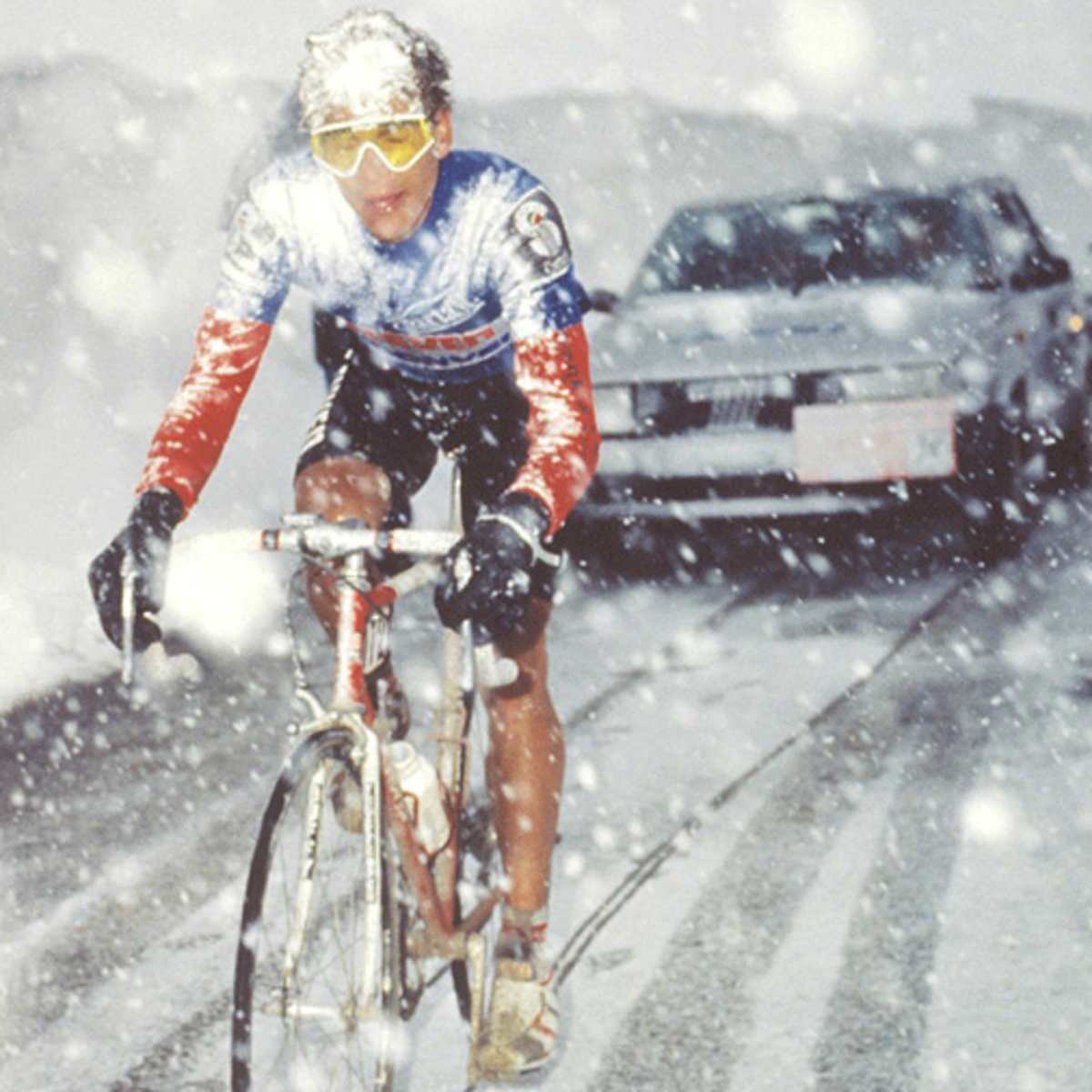In the storied history of the Giro d’Italia—a race synonymous with suffering, spectacle, and sublime scenery—one stage stands above the rest as the purest test of endurance and willpower. It occurred on June 5, 1988, during Stage 14 of that year’s Giro. The route was grueling enough on paper, a 120-kilometer ride from Chiesa in Valmalenco to Bormio, featuring the towering Gavia Pass at 2,621 meters above sea level. But no one, not even the most seasoned of pros, expected the Alpine gods to unleash a blizzard that would transform a challenging mountain stage into an existential battle for survival.
This is the story of that day. The day cycling nearly froze.

The 1988 Giro d’Italia had been unfolding with typical Italian drama. Pre-race favorites included Dutchman Erik Breukink and American Andy Hampsten, riding for the U.S.-based 7-Eleven team. Hampsten had shown promise as a climber and had top-10 Grand Tour finishes to his name, but no major victories yet. Few believed that he, or his American team, had what it took to win a race as chaotic and brutal as the Giro.
Stage 14 was seen as a pivotal mountain stage. The Gavia Pass had been used only once before in the Giro (in 1960), and even then, on the descent rather than the climb. It was mostly a gravel road, with minimal guardrails, exposed to the elements. Even in good weather, it was daunting. In early June, snow was not uncommon at such altitude, but race organizers decided to proceed anyway.
By the time the peloton rolled out of Chiesa in Valmalenco, dark clouds were gathering over the high peaks, and temperatures had already begun to drop.
Climb into chaos
As the riders began the ascent of the Gavia Pass, roughly 80 kilometers into the stage, rain started to fall. That rain quickly turned to sleet, and then snow. The temperature plummeted to well below freezing. Many riders, used to summer-weight jerseys and bare legs, were woefully underdressed. Some tried improvising—stuffing newspapers and plastic bags under their jerseys—but nothing could fully protect them from what lay ahead.
Visibility dropped to a few meters. The gravel road turned to slush. Bicycles skidded and fishtailed on the icy climb. Hands went numb, derailleurs froze, and morale shattered. Several riders stopped and huddled with spectators, begged for warm clothing, or climbed into team cars. Others kept pedaling, more out of momentum and fear than strategy.
Andy Hampsten, meanwhile, attacked.
He launched a move partway up the Gavia, partly to take the initiative and partly to avoid hypothermia by keeping his heart rate high. His director, Mike Neel, had some inkling of the conditions ahead and had wisely packed heavier gear and warm drinks in the team car. Hampsten was wearing a clear plastic rain cape and wool gloves, far from ideal, but far better than what many of his rivals had.
As he pushed forward into the blizzard, it became clear: this wasn’t just a race—it was survival.
Descent into hypothermia
At the summit, the blizzard reached its crescendo. Snow fell in sheets, wind gusted at over 60 km/h, and the riders were barely distinguishable from the landscape. But what came next was arguably worse.
The descent from the Gavia was treacherous. The road twisted through ice-covered switchbacks, flanked by sheer drops and strewn with wet gravel. Many riders reported that they couldn’t feel their hands and had to brake with the palms of their hands or jam their wrists into the levers. Some crashed. Others simply unclipped and walked sections of the descent.
Andy Hampsten, despite being almost blind with snow and suffering from the cold, held his nerve and his position. Erik Breukink, one of the best descenders in the peloton, managed to catch him on the way down and passed him to win the stage. But the damage had been done.
Hampsten crossed the line shortly after Breukink and, more importantly, took the maglia rosa, the pink jersey of the Giro leader.
The aftermath
At the finish line in Bormio, the scene resembled a battlefield infirmary more than a professional cycling event. Riders were covered in mud and ice, lips blue, teeth chattering uncontrollably. Many needed to be carried off their bikes. A few were hospitalized with hypothermia. Hampsten, his face drained of color and his limbs barely responding, collapsed into the 7-Eleven team car and was quickly wrapped in blankets and given hot tea.
Despite his physical state, his resolve remained intact. He had just made the decisive move of the Giro.
Over the next several stages, Hampsten defended his lead with fierce determination and tactical discipline. He faced more rain, attacks from rivals, and intense media attention. But nothing could break him after what he had endured on the Gavia.
On June 12, 1988, Andy Hampsten officially became the first American to win the Giro d’Italia—a feat no other cyclist from the US has matched to this day.